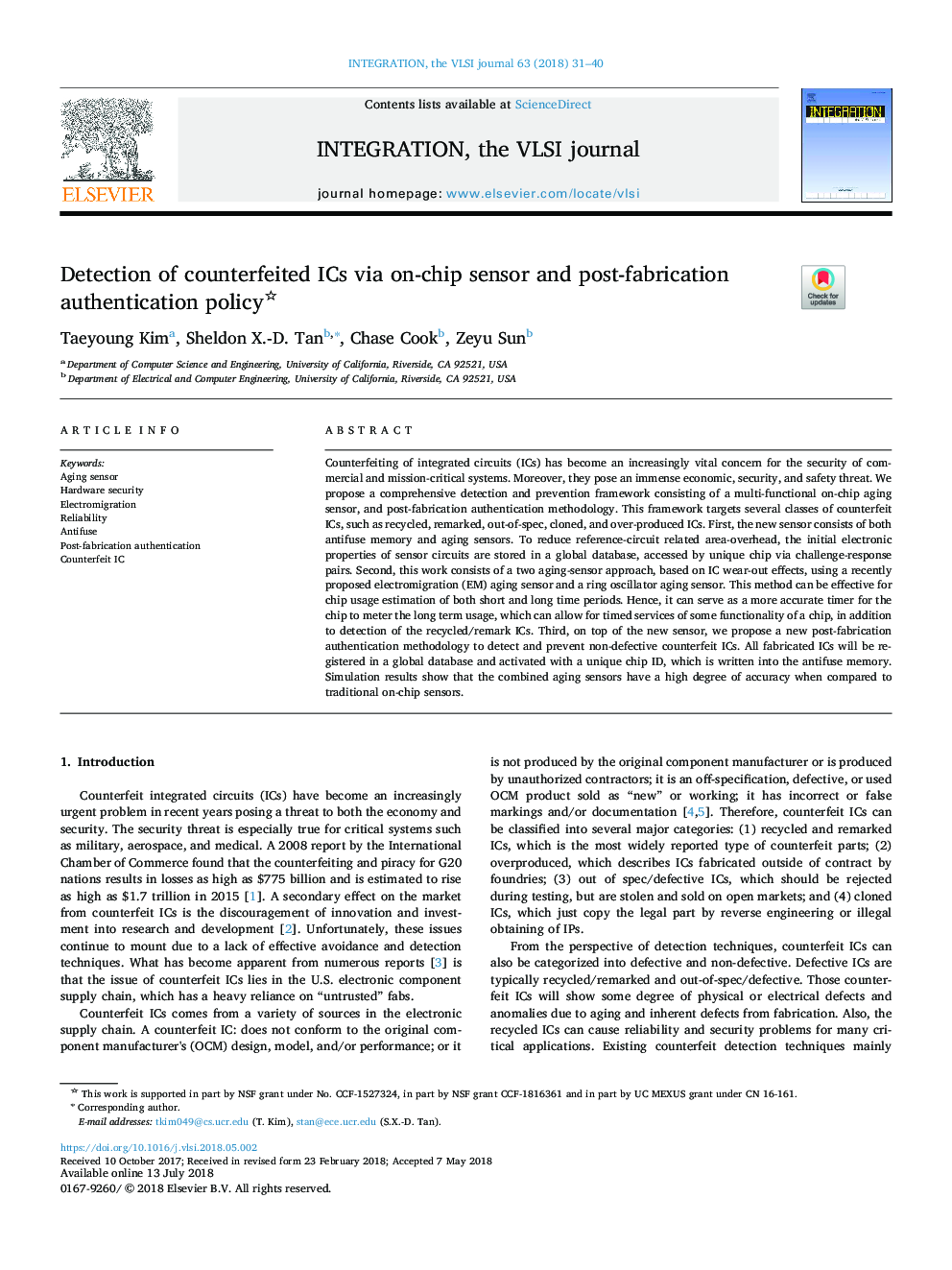| Article ID | Journal | Published Year | Pages | File Type |
|---|---|---|---|---|
| 11020911 | Integration, the VLSI Journal | 2018 | 10 Pages |
Abstract
Counterfeiting of integrated circuits (ICs) has become an increasingly vital concern for the security of commercial and mission-critical systems. Moreover, they pose an immense economic, security, and safety threat. We propose a comprehensive detection and prevention framework consisting of a multi-functional on-chip aging sensor, and post-fabrication authentication methodology. This framework targets several classes of counterfeit ICs, such as recycled, remarked, out-of-spec, cloned, and over-produced ICs. First, the new sensor consists of both antifuse memory and aging sensors. To reduce reference-circuit related area-overhead, the initial electronic properties of sensor circuits are stored in a global database, accessed by unique chip via challenge-response pairs. Second, this work consists of a two aging-sensor approach, based on IC wear-out effects, using a recently proposed electromigration (EM) aging sensor and a ring oscillator aging sensor. This method can be effective for chip usage estimation of both short and long time periods. Hence, it can serve as a more accurate timer for the chip to meter the long term usage, which can allow for timed services of some functionality of a chip, in addition to detection of the recycled/remark ICs. Third, on top of the new sensor, we propose a new post-fabrication authentication methodology to detect and prevent non-defective counterfeit ICs. All fabricated ICs will be registered in a global database and activated with a unique chip ID, which is written into the antifuse memory. Simulation results show that the combined aging sensors have a high degree of accuracy when compared to traditional on-chip sensors.
Related Topics
Physical Sciences and Engineering
Computer Science
Hardware and Architecture
Authors
Taeyoung Kim, Sheldon X.-D. Tan, Chase Cook, Zeyu Sun,
